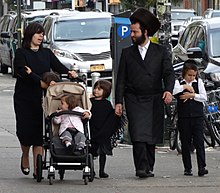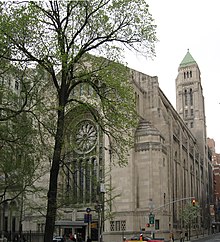|
United States – New York Home for the Aged
Circa 1910 Copper Medal 33mm (10.70 grams)
HEBREW KINDERGARTEN & INFANTS HOME 35&37 MONTGOMERY ST. N.Y.C. CENTRAL & PLANVIEW AVES. FAR ROCKAWAY, Child holding out hands within heat-shaped wreath.
HAVE A HEART HELP THE ORPHANS AND GOD WILL HELP YOU GOOD LUCK COIN, Heart-shaped wreath.
You are bidding on the exact item pictured, provided with a Certificate of Authenticity and Lifetime Guarantee of Authenticity.
 Jews have settled in New York state since the 17th century. In August 1654, the first known Jewish settler, Jacob Barsimson, came to New Amsterdam. The Dutch colonial port city was the seat of the government for the New Netherland territory and became New York City in 1664. Jews have settled in New York state since the 17th century. In August 1654, the first known Jewish settler, Jacob Barsimson, came to New Amsterdam. The Dutch colonial port city was the seat of the government for the New Netherland territory and became New York City in 1664.
The first significant group of Jewish settlers came in September 1654 as refugees from Recife, Brazil to New Amsterdam. Portugal had just conquered Brazil from the Dutch Republic and the Spanish and Portuguese Jews there promptly fled. A group of 23 Jewish immigrants in New Amsterdam was greeted by director general Peter Stuyvesant who was at first unwilling to accept them.
 The Jewish population in New York City went from about 80,000 in 1880 to 1.6 million in 1920. By 1910, more than 1 million Jews made up 25 percent of New York’s population and made it the world’s largest Jewish city. As of 2016, about 1.1 million residents of New York City, or about 12 percent of its residents, were Jewish. New York state has about 1.75 million Jews, comprising approximately 9 percent of its total population. The Jewish population in New York City went from about 80,000 in 1880 to 1.6 million in 1920. By 1910, more than 1 million Jews made up 25 percent of New York’s population and made it the world’s largest Jewish city. As of 2016, about 1.1 million residents of New York City, or about 12 percent of its residents, were Jewish. New York state has about 1.75 million Jews, comprising approximately 9 percent of its total population.
Between 1880 and 1924, 2.5 million Ashkenazi Jews from the Russian Empire, Romania, and Austria-Hungary came to the United States and nearly 75 percent took up residence on the Lower East Side. The Jewish population in New York went from about 80,000 in 1880 to 1.5 million in 1920 This new mix of cultures changed what was a middle-class, acculturated, politically conservative community to a working-class, Yiddish-speaking group with a varied mix of ideologies including socialism, Zionism, and religious orthodoxy. The population of Jews eventually hit over one million by the 1900s and crowded into Jewish neighborhoods. The less-fortunate began to make the Lower East Side their own district as an influx of Jews reached the city between the 1870s and early 1900s.
The Jews of Central and Eastern Europe faced economic hardship, persecution, and social and political changes in the 1800s through the early 1900s, causing them to flee to the United States. In Russia, there were waves of pogroms between 1881 and 1921.
In 1940, 90% of New York state’s 2,206,328 (1937 figure) Jews resided in the city. However, the next two decades saw a flow to the suburbs.
|




 Jews have settled in New York state since the 17th century. In August 1654, the first known Jewish settler, Jacob Barsimson, came to New Amsterdam. The Dutch colonial port city was the seat of the government for the New Netherland territory and became New York City in 1664.
Jews have settled in New York state since the 17th century. In August 1654, the first known Jewish settler, Jacob Barsimson, came to New Amsterdam. The Dutch colonial port city was the seat of the government for the New Netherland territory and became New York City in 1664.  The Jewish population in New York City went from about 80,000 in 1880 to 1.6 million in 1920. By 1910, more than 1 million Jews made up 25 percent of New York’s population and made it the world’s largest Jewish city. As of 2016, about 1.1 million residents of New York City, or about 12 percent of its residents, were Jewish. New York state has about 1.75 million Jews, comprising approximately 9 percent of its total population.
The Jewish population in New York City went from about 80,000 in 1880 to 1.6 million in 1920. By 1910, more than 1 million Jews made up 25 percent of New York’s population and made it the world’s largest Jewish city. As of 2016, about 1.1 million residents of New York City, or about 12 percent of its residents, were Jewish. New York state has about 1.75 million Jews, comprising approximately 9 percent of its total population. 




